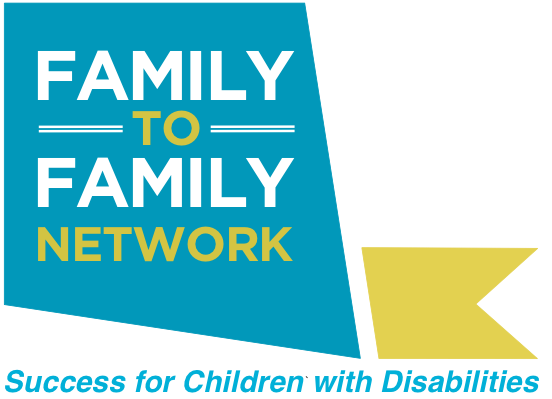
Moving to Texas
So you have decided to make a big move to Texas with your child or adult with disability. Here are important things to know before you move!
- Medicaid will NOT transfer from state to state. If your child currently receives any sort of medicaid or medicaid waiver supports in your state – these DO NOT Transfer to Texas. And in Texas – there is a waiting list for community support services like attendant care, therapies, respite. For the HCS program – the wait is 14-16 years; for the CLASS program it might 10-12 years. If you still want to move here – Here is a link to Apply for support services – https://www.hhs.texas.gov/services/health/medicaid-chip/medicaid-chip-programs-services/programs-children-adults-disabilities
Please also see the information on Community First Choice on our Medical & Long Term Supports page. For more information on the waiting lists in Texas – See HHS Interest List reduction page - If you have guardianship – you may need to submit/transfer information again to the courts in Texas. Guardianships are set up in the state where your child lives. When you move, you may need to transfer the guardianship to Texas. Check with an attorney to find out what you need to do. Texas has supported decision making, which may be an option to guardianship.
- If your child receives special education or related services in school – You may want to do the following BEFORE you leave:
- Make sure that all the services that your child currently receives are noted in your IEP. Sometimes when a good teacher has been working with a student for awhile, they may use strategies or supports that work, but are not noted in the child’s IEP. Make sure everything is written down. If it is not written down, it DID NOT happen.
- Make sure that if a stranger was to pick up the goals and objectives – they would know what to do/how to teach the goal. Sometimes goals are written and they are really not easily understood (except by the person who wrote them or is teaching) or they may not be measurable. Check your child’s goals – do you know what your child is supposed to learn? Can you easily measure whether he/she has done that or not? If not, you may want to ensure that your child’s goals and objectives are clearly written and measurable.
- If your child’s eligibility category is listed as “Developmental Delay”, please know that this eligibility category is not yet in state statute. Your child may have to be re-evaluated at the new district. To keep this from happening, you may want to have your current IEP updated before moving to match one of the disability categories in Texas.
- Is it time for your child’s re-evaluation? Is your evaluation current? Should you think about getting an evaluation done with people who know your child BEFORE you move? Just something to keep in mind.
- Make sure you have a complete copy of the most current evaluation and whole individual education program (IEP). Sometimes parents only have a few pages. Organize your information in a binder or other file system so that you can find it. Go by your current school and ask to review the special education folder and make sure you have all the documentation that you need. Your child’s big file will not travel to the new school district when your new district requests records….only the most recent attendance, grades, and IEP will be sent.
- Download a copy of the IDEA Manual, a parent friendly guide to special education in Texas. Sample letters, checklists, and how to’s.
- In Texas – we practice site based management. Principals set the tone. Meaning that there can be great schools in a lousy district, and lousy schools in a great district. A school that is good one year, may not be good the next year due to staff changes. Also every parent’s expectations are different. What is good for one child may not be good for another. For that reason, Family to Family Network cannot really tell you what school or district to move into.
- There are lots of beautiful new homes in Texas, but go with your gut.
- If you move into a beautiful home, hoping that a school will be a good fit for your child – you may be sadly disappointed.
- If you go visit a school and you feel good about what you see/hear – check to see if people are moving around or plan to stay….and check the school board minutes to make sure “re-zoning” of your potential neighborhood is not on the radar.
- If you are moving into a newer neighborhood, there are lots of new subdivisions being built, or the district is building lots of new schools, there is a high chance that your child could be moving schools at some point in your child’s educational career, especially if you are in a fully segregated placement (they move these classes often based upon space available in a building).
- If you want to learn more about specific school districts and how students with disabilities fair with testing, discipline and least restrictive environment (generally speaking). Make sure you check out a district Results Driven Accountability reports (special education is usually found starting on pg 10) https://rptsvr1.tea.texas.gov/pbm/distrpts.html Also Texas has low rate of identifying students needing special ed. services – check to see if your district Sped Representation is more or less than 8.5% (if less, you may have a harder time getting services for your child).
- To locate a school in Texas, go to School District Locator or search by County.
- There are lots of beautiful new homes in Texas, but go with your gut.
- Create a Portfolio for your child. A portfolio is a great tool to help the new school get to know your child with a disability. For more information on how to do this – see https://texasprojectfirst.org/portfolios/
- Learn about provision of comparable services, evaluations, etc. when moving – See guidance questions A1- A5 issued by the US Dept of Education regarding transfers within state and from one state to another – See Questions and Answers on IEP Development, Evaluation and Reevaluation.
- In addition – the Office of Special Ed. Programs (OSEP) has issued a guidance letter regarding Ensuring FAPE for Highly Mobile Children and may help answer many of your questions regarding temporary IEPs, Evaluation & eligibility determination and the provision of Comparable Services when a student moves into a new district.
- Remember YOU ARE A PART of the IEP process and can agree or disagree to whatever the new school is planning to provide.
Region 4 ESC Flowchart for transferring districts IN Texas and from OUTSIDE Texas (pdf)
Please see the following pages on our website:
IEP SUPPORT TOOLS– Get a copy of IDEA manual to help you understand the special ed. process in Texas.
HOUSTON ORGANIZATIONS – A listing of parent support groups in the Houston area
Also feel free to call our office (713-466-6304) and speak to a parent liaison for more information or Use the Contact Us page to get more information.
If you are moving to a location outside the Houston area – please call the Parent Training & Information Center for the state of Texas to find support in your new area.
You can also search for support groups & other organizations in your area on the Navigate Life Texas website.
The military has developed Moving with an IEP as well as other resources, such as Plan My Move. Reach out to your EFMP.
